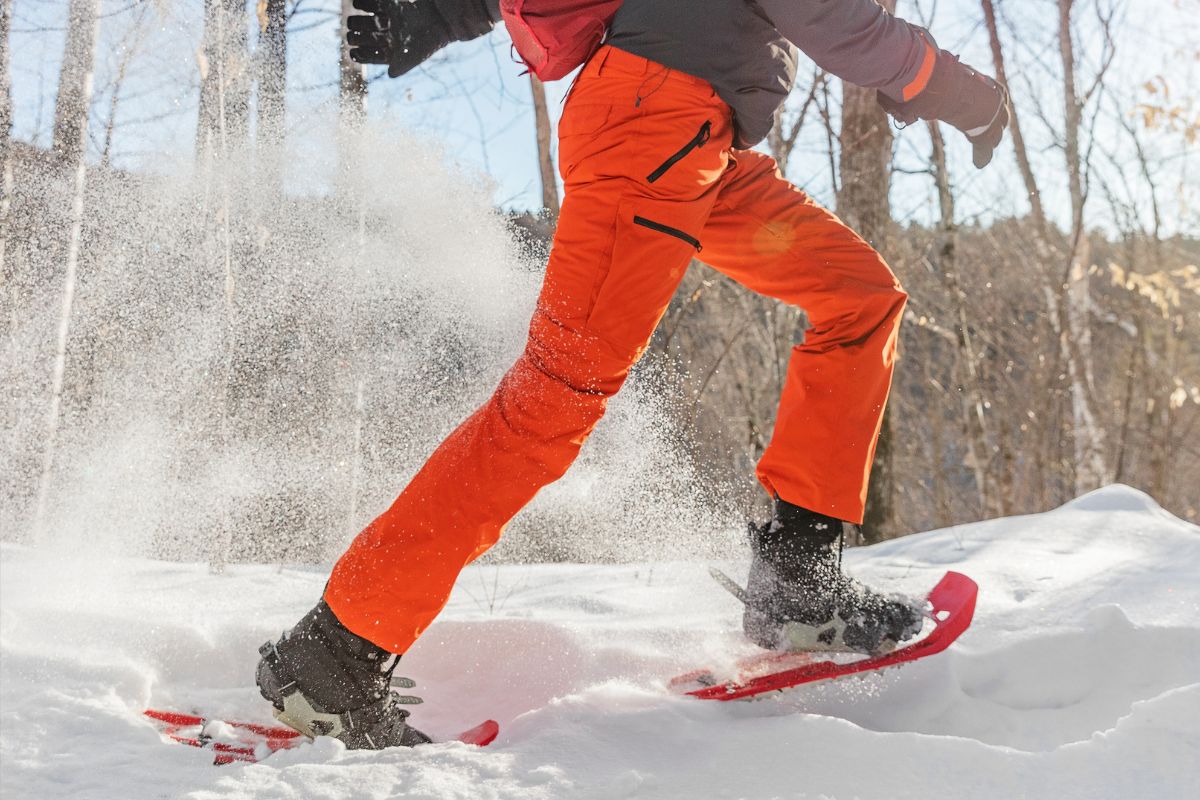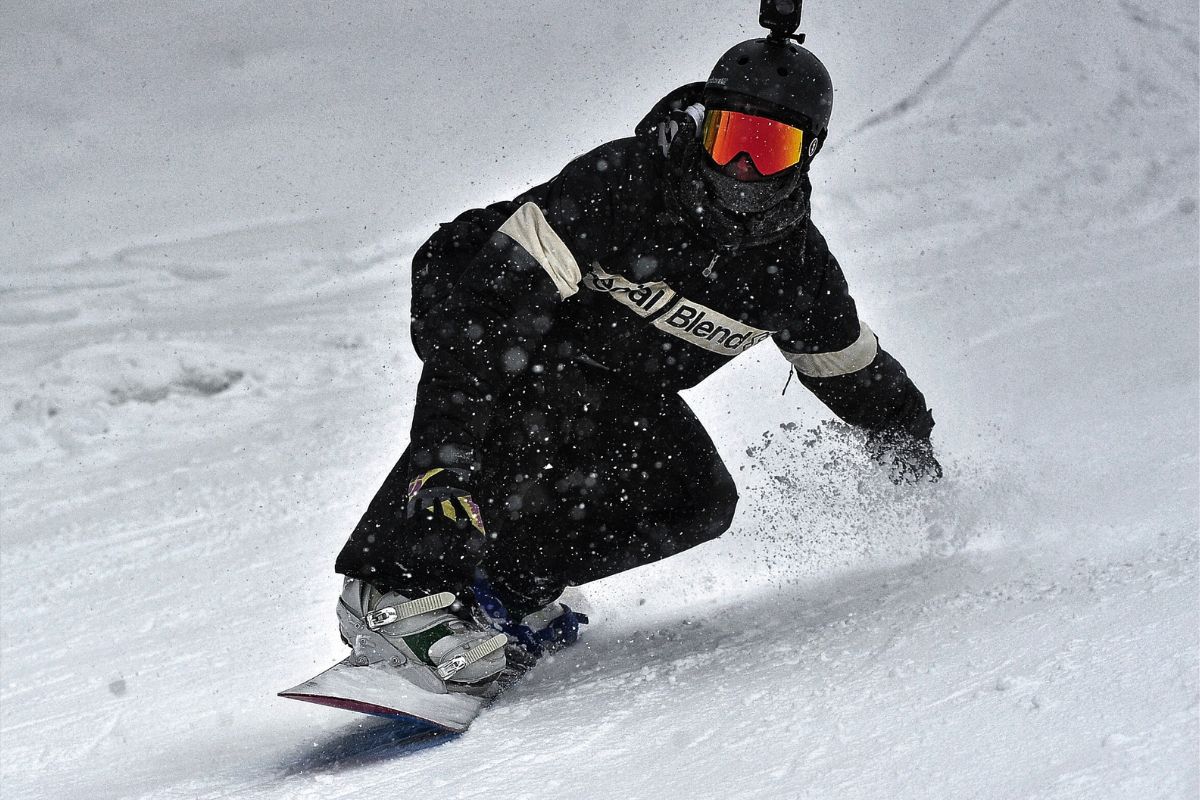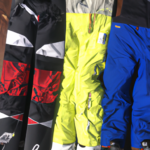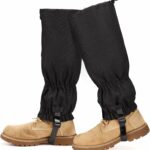When you are skiing, you might be wondering what to wear under your pants. We all know how cold it can get up on the slopes, but also the fact that the weather can change on a dime.
You might go from glacial cold to baking hot in under a few minutes.

There are 3 different types of layering that most skiers operate by: the outer layer, the insulation layer and the liner. Sometimes if the weather is warm, then you can go without the insulation layer.
Most of these layers should be waterproof, even down to the lining.
So what exactly should you be wearing under your snow pants? How can you be prepared for both the cold and the baking hot sun? Well, if you read this article, you’ll have a better idea of what to expect when out on the slopes.
Why Do You Need Layers For Skiing?
Well, it probably goes without saying that the temperatures on the slopes can go from one extreme to another. You’ll need layers that are both waterproof but also breathable.
If you expect the day to be very cold, then you’ll need to make sure that you have a lot of thermal protection. But you’ll have to bear in mind the heat that your body will be generating from inside your clothing.
The most important thing about snow pants is that they should be versatile. You’ll need to make sure that there is enough warmth for the perspiration to be ejected.
This will all depend on how much discomfort you are able to tolerate. It might seem strange to say, but you’ll want to avoid overheating as well as getting too chilly on the slopes.
What To Consider When It Comes To Base Layers
One of the main things that you’ll want to consider for your ski pants is insulation. This will all depend on warm you want to be when you are skiing.
Heavy insulation can be very cumbersome and actually impede your movements, so you’ll want to balance it out. You won’t want a material that is going to make you sweat too much, especially between your thighs, as this can cause significant chafing.
When it comes to choosing the right base layer, you’ll want to think about one thing: What fabric are you going to use?
Choosing The Right Fabric For Your Snow Pants
There are 2 main materials that traditional snow pants are made from, and that is merino wool and polyester.
They have different properties, but both are extremely durable and comfortable when it comes to spending long periods in the snow.

Polyester
If you are going to use a polyester fabric, then you can expect a much stretchier material. This is great as it will not restrict your movements when you are cutting through the snow.
This might be preferable to sporty skiers rather than casual or cross-country skiers.
If you are someone who likes working up a lot of sweat, then you might want to choose polyester also. This will keep you a lot more comfortable for a long period, as it will help you to wick away a lot of moisture.
These pants are also a lot more breathable, so they will be appealing to anyone who is exerting themselves on the mountain path or country trail.
If you are underexposed sun for most of the day, then having something that will keep you cool is paramount.
Merino Wool
If it is warmth that you are looking for, merino wool is the option for you.
Being wool, it is a lot thicker and far more durable than polyester. If you are skiing in colder climates, then merino wool will definitely keep you protected and warm.
These pants will really retain a lot of heat, which is great for cross-country skiers who like to brave the colder weather. However, if you sweat a lot, then you might not want these pants as they will cause you to sweat a lot more.
Merino wool will also absorb a lot more moisture and it is not that good at drying. This might not be appealing to anyone who wants to dry their clothes quickly and efficiently.
How Well Should Your Snow Pants Fit?
There are many styles that you can choose from when you are picking out what underwear for your snow pants.
A lot of skiers go for the three-quarter length style. This will keep your legs warm without overheating your ankles, which are often the areas that will warm up considerably.
Again, this will all depend on what material you are going to be choosing. A merino wool snow pant will trap a lot of the warmth that can travel from your body through the base layer and out through the outer layer.
If you are looking for something that you can easily conceal under your outer layer, then you could go for a more figure-hugging polyester layer.
This will fit tight to your skin and not result in an excess cloth that could impede your movements.
A polyester underlayer also won’t cause you any chafing, which is great if you want to ski in the great outdoors for hours at a time. You’ll want to avoid rashes which are often caused by long-term exposure to sweat.
You can also go for leggings or long johns, which are not that different.
Leggings just cover the bottom half and will be a lot easier to slip on and off. Long johns, on the other hand, cover more of your, keeping you warmer, but they are a lot trickier to get off.
Again, you’ll need to be aware of what type of skiing you are doing and adapt your snow pants accordingly.
Conclusion
We hope that our guide to snow pants has helped you to identify the properties that you’ll need to keep you warm, comfortable and dry.
We would also recommend that you spend enough money on these, as a cheaper pair might not last you that long.
- How to Choose a Skim Board - September 10, 2023
- is Skim Boarding Hard? - February 8, 2023
- How To Wax a skim board - February 8, 2023










